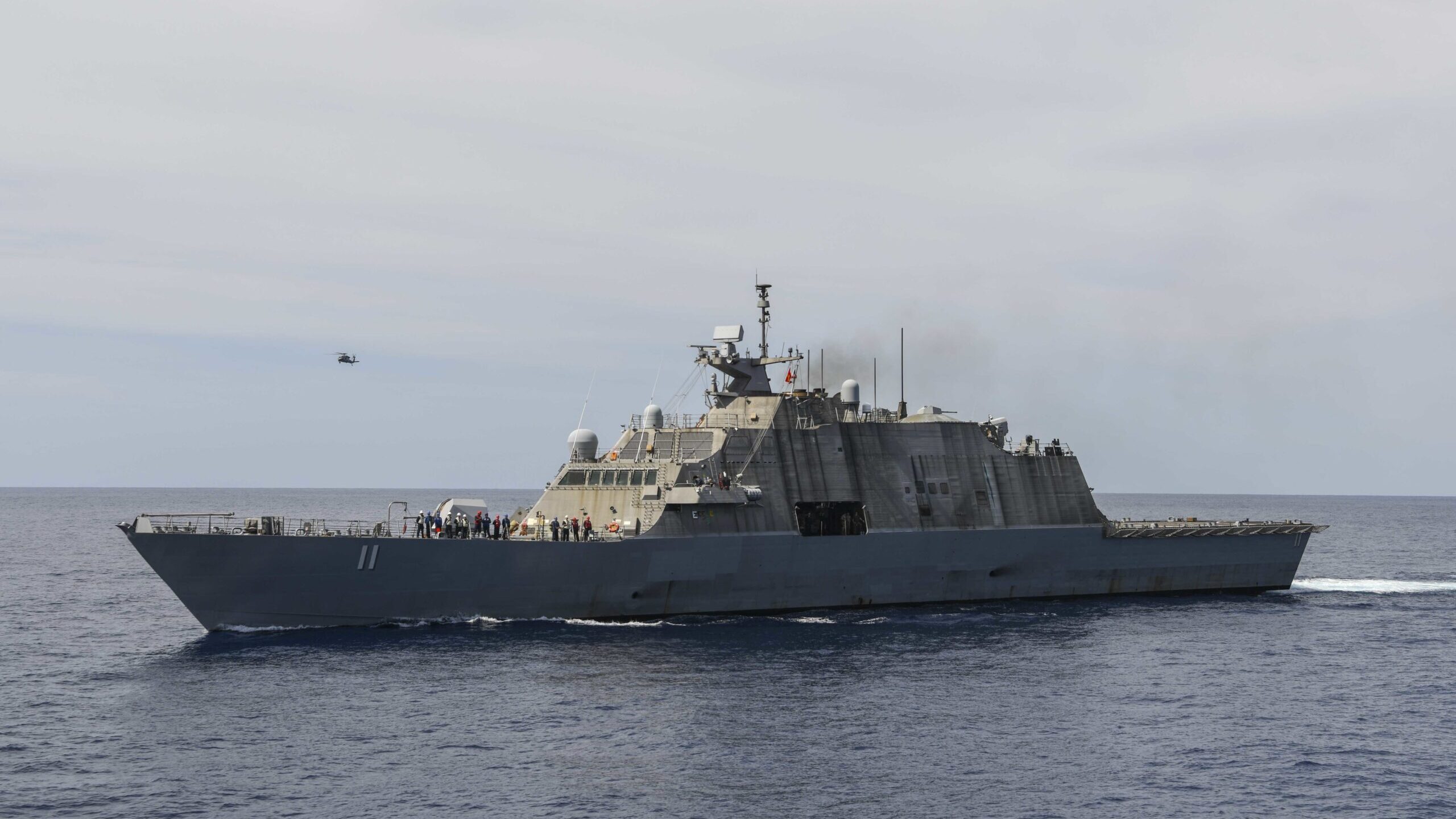
The Freedom-class littoral combat ship USS Sioux City (LCS 11) transits the Atlantic Ocean, May 3. (U.S. Navy/ Trey Fowler)
WASHINGTON: The Navy today notified Congress about a significant cost breach in the Littoral Combat Ship mission module program that stemmed from the service’s decision to stop developing the anti-submarine warfare package.
“On May 13, the U.S. Navy notified Congress of an increase in the Program Acquisition Unit Cost (PAUC) and the Average Procurement Unit Cost (APUC) for the Littoral Combat Ship (LCS) Mission Modules (MM) program,” Navy spokesman Capt. Clay Doss told Breaking Defense in a statement. “Specifically, PAUC increased by 37.3 percent from the original baseline. PAUC increased by 18 percent and APUC increased by 17.2 percent from the current baseline.”
A cost breach of this magnitude reaches the threshold of a Nunn-McCurdy breach, referring to legislation that states the Pentagon must explicitly notify lawmakers anytime a program’s anticipated cost estimates balloon significantly higher than the predetermined baselines. Nunn-McCurdy breaches are considered the highest-level of concern when it comes to Pentagon cost overruns.
The breach was triggered by the service’s choice in its fiscal 2023 budget request to stop pursuing the anti-submarine warfare mission module package, which the Navy says has failed to meet expectations. Regardless of whether Congress allows the service to retire nine LCS, the service made clear it doesn’t intend to pursue the ASW mission package any further.
“Additionally, the [president’s budget] 2023 revised quantities increase in the proportion of the most expensive MP (Mine Countermeasures) relative to the less expensive MPs (Surface Warfare and ASW),” Jay Stefany, a senior Navy acquisition official, wrote in a May 9 letter delivered to lawmakers and obtained by Breaking Defense.
The cost breach is one in a series of problems the Navy has racked up with the Littoral Combat Ship program and its associated capabilities in recent years. A class-wide problem with the Freedom variant’s combining gear has triggered costly maintenance requirements. A new report by Navy Times suggests the service is also now dealing with hull cracking. And lawmakers are far from impressed with the service’s request to decommission nine of the ships much earlier than anticipated.
Adm. Michael Gilday, the Navy’s top officer, this week defended the decision to retire nine LCS hulls in part because of the challenges from the anti-submarine capability. “After about a year and a half [of] study, I refused to put an additional dollar against the system that wouldn’t be able to track a high-end submarine in today’s environment,” he said.
Multi-ship amphib buy could net $900M in savings, say Navy, Marine Corps officials
Lawmakers gave the Navy authorities to ink a multi-ship amphib deal years ago, but the service has not utilized that power yet.


























